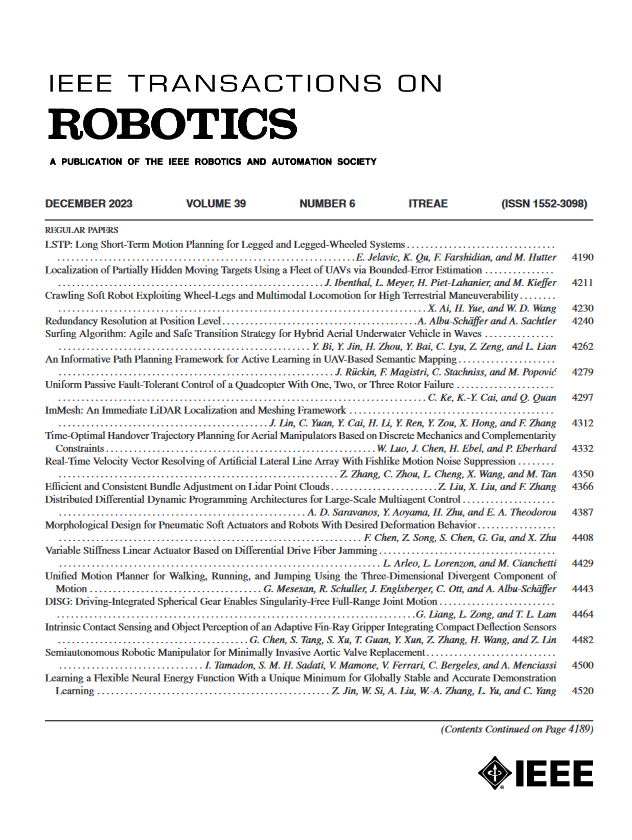液压驱动双关节柔性机器鱼的设计、建模与优化
IF 9.4
1区 计算机科学
Q1 ROBOTICS
引用次数: 0
摘要
本文章由计算机程序翻译,如有差异,请以英文原文为准。
Design, Modeling, and Optimization of Hydraulically Powered Double-Joint Soft Robotic Fish
This article explores a hydraulically powered double-joint soft robotic fish called HyperTuna and a set of locomotion optimization methods. HyperTuna has an innovative, highly efficient actuation structure that includes a four-cylinder piston pump and a double-joint soft actuator with self-sensing. We conducted deformation analysis on the actuator and established a finite element model to predict its performance. A closed-loop strategy combining a central pattern generator controller and a proportional–integral–derivative controller was developed to control the swimming posture accurately. Next, a dynamic model for the robotic fish was established considering the soft actuator, and the model parameters were identified via data-driven methods. Then, a particle swarm optimization algorithm was adopted to optimize the control parameters and improve the locomotion performance. Experimental results showed that the maximum speed increased by 3.6% and the cost of transport ($\text{COT}$ $\text{COT}$
求助全文
通过发布文献求助,成功后即可免费获取论文全文。
去求助
来源期刊

IEEE Transactions on Robotics
工程技术-机器人学
CiteScore
14.90
自引率
5.10%
发文量
259
审稿时长
6.0 months
期刊介绍:
The IEEE Transactions on Robotics (T-RO) is dedicated to publishing fundamental papers covering all facets of robotics, drawing on interdisciplinary approaches from computer science, control systems, electrical engineering, mathematics, mechanical engineering, and beyond. From industrial applications to service and personal assistants, surgical operations to space, underwater, and remote exploration, robots and intelligent machines play pivotal roles across various domains, including entertainment, safety, search and rescue, military applications, agriculture, and intelligent vehicles.
Special emphasis is placed on intelligent machines and systems designed for unstructured environments, where a significant portion of the environment remains unknown and beyond direct sensing or control.
 求助内容:
求助内容: 应助结果提醒方式:
应助结果提醒方式:


